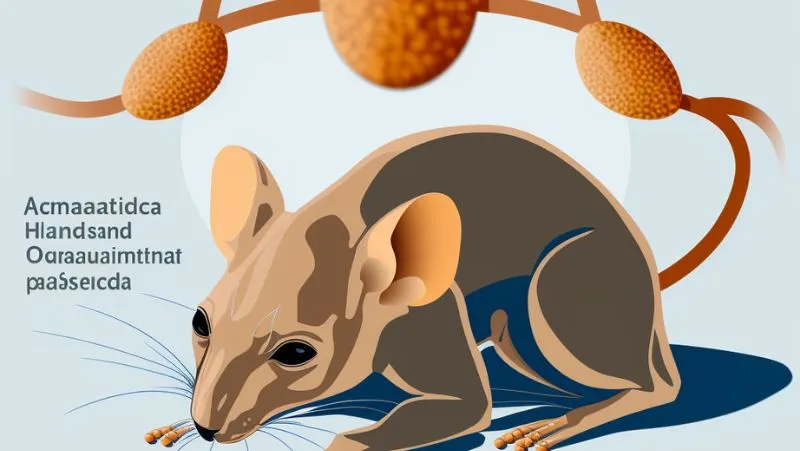Spoilers for this article
- Withania somnifera root extract (ashwagandha (type of Indian cactus)) was found to improve catecholamines, oxidative damage, and physiological abnormalities in a mouse model of Parkinson's disease.
- In PD mice, motor function improved after 7 days of treatment, and after 28 days of treatmentantioxidantwas also observed to increase.
- ashwagandha (type of Indian cactus)is attracting attention as a new treatment method.
'We're looking for more natural ways to treat Parkinson's disease.'
I'm looking for a natural remedy that is proven by the numbers."
."ashwagandha (type of Indian cactus)I want to know why is this a new treatment option?"
This article is for those people.
Withania somnifera root extract, a treatment of natural origin (ashwagandha (type of Indian cactus)) has attracted attention as a treatment for Parkinson's disease and has been demonstrated numerically.
We hope you will find this article useful for future clinical research and for those interested in natural treatments.
What is ashwagandha in the first place?

ashwagandha (type of Indian cactus)(scientific name: Withania somnifera Dunal) has been used for thousands of years in Ayurveda, the traditional medicine of India, to treat both physical and mental health problems.stressThe herb has been used as an effective medicine, tonic, and even aphrodisiac.
Nowadays, the effectiveness of these products has been proven by modern science through various clinical studies, and they are attracting attention.
The fruit is an evergreen shrub of the eggplant family. The name comes from the horse's (ashwa) smell (ganda).
Some say it is named after the robust vigor of horses.
▼Recommended Articles

Research Paper Information
We would like to introduce you to theWithania somnifera (ashwagandha (type of Indian cactus)rootessenceameliorates catecholamines and physiological abnormalities seen in mouse models of Parkinson's disease(Japanese translation)" paper.
| Paper Title | Withania somnifera root extract improves catecholamines and physiological abnormalities seen in a Parkinson's disease model mouse |
| Magazine name | J Ethnopharmacol |
| Date of Issue | September 25, 2009 |
| author (usu. of a particular book, etc.) | Srinivasagam RajaSankar 1, Thamilarasan Manivasagam, Venkatachalam Sankar, Seppan Prakash, Rathinasamy Muthusamy, Arumugam Krishnamurti, Sankar Surendran |

Research Paper Background
Parkinson's disease is a neurodegenerative disease caused by nerve cell damage,muscleMovement disorders such as stiffness, tremors, and balance disorders insymptoms.
The disease is caused by damage to dopamine-producing neurons in the brain.
Dopamine is a neurotransmitter that controls movement and emotion.
Patients with Parkinson's disease have impaired motor function because of decreased dopamine production.
- dopamine
-
A neurotransmitter, a hormone that plays an important role in the brain and nervous system.
Dopamine is involved in many brain functions, including motor, learning, and reward systems, especially related to motor function and emotional responses.
Deficiency causes neurodegenerative diseases such as Parkinson's disease.
Ashwagandha is traditionally believed to improve motor function
Withania somnifera (ashwagandha (type of Indian cactus)rootessenceis an herb that has been traditionally used for over 4,000 years in Ayurveda, the traditional medicine of India, and has been shown to benefit nerve growth and motor function.
Traditionally.ashwagandha (type of Indian cactus)to improve motor function."
↓arrow (mark or symbol)
"Could this have an ameliorative effect on the movement disorders of Parkinson's disease?" That's the story.
Role of Catecholamines and Oxidative Stress in Parkinson's Disease
Parkinson's disease is primarily caused by damage to dopamine-producing neuronsInsufficient production of dopamineIt is.
This neuronal damage is caused by catecholamine metabolism, which leads to oxidativestressIt is further progressed by
oxidationstressare known to cause a variety of diseases, including aging, inflammation, neurodegenerative diseases, and heart disease.
- catecholamine
-
Act as neurotransmitters and hormonescompoundA type of
It is known to exist in the synaptic cleft and perform neurotransmission.
Catecholamines include dopamine, noradrenaline, and adrenaline.
These substances are known to be essential for normal physiological functions, related to mental states, emotions, motor functions, and metabolism.
- oxidationstress
-
A condition caused by excessive accumulation of free radicals and oxidants that are harmful to the body.
Free radicals and oxidants are chemicals produced inside and outside the cell that, when accumulated in excess, can damage biomolecules such as DNA, proteins, and lipids.
Catecholamines are the collective name for dopamine, noradrenaline, and adrenaline.
Dopamine is one of the catecholamines.
If you keep this in mind, it will make this article a lot easier to understand.
Purpose of the Study
The purpose of this study was to investigate the effects of Withania somnifera (ashwagandha (type of Indian cactus)rootessenceThe,To determine if it is effective in ameliorating catecholamines and physiological abnormalities in a mouse model of Parkinson's disease.It is.
In short, "ashwagandha (type of Indian cactus)is effective for Parkinson's disease".
Spoiler alert: It seems to work.
Parkinson's disease model mice were created, and Withania somnifera (ashwagandha (type of Indian cactus)rootessenceAfter administration of catecholamines andantioxidantand other physiological indices to evaluate the effects of administration.
With the results of this study,ashwagandha (type of Indian cactus)will determine whether or not it is useful in the treatment of Parkinson's disease.
research methods
In this study, 1-methyl-4-phenyl-1,2,3,6-tetrahydropyridine (MPTP) was used to create a mouse model of Parkinson's disease.
- MPTP
-
One of the substances that cause Parkinson's disease.
MPTP is a carcinogenic chemical that destroys dopamine-producing cells in the brain.
It is usually synthesized artificially and used for research purposes.
MPTP is known for its specific toxicity to neurons and is often used to study neurodegenerative diseases.
So MPTP treatment generates laboratory mice with Parkinson's-like symptoms.
ashwagandha (type of Indian cactus)was administered by mouth to a mouse model of Parkinson's disease.
The dose is 100 mg per kg of body weight.
The dosing periods were 7 days or 28 days, and efficacy was evaluated for each period.
Catecholamines,antioxidantand physiological indicators such as lipid peroxidation markers,ashwagandha (type of Indian cactus)The measurements were taken to assess the effectiveness of the
| research methods | Description. |
|---|---|
| MPTP Processing | Parkinson's disease mouse model after 4 days of administration of MPTP |
| ashwagandha (type of Indian cactus)prescribing medicine | Withania somnifera rootessenceby mouth at a dose of 100 mg per kg of body weight for 7 days or 28 days. |
| Catecholamine Measurement | Measurement of dopamine (DA), 3,4-dihydroxyphenylacetic acid (DOPAC), and homovanillic acid (HVA) from striatum of Parkinson's disease model mice |
| antioxidantmeasurement | Glutathione (GSH) and glutathione peroxidase (GPx) were measured from a mouse model of Parkinson's disease |
| Lipid peroxidation marker measurement | Measurement of thiobarbituric acid reactive substances (TBARS) from a mouse model of Parkinson's disease |
| Motor Function Assessment | Assess motor function with the Hang and Rotarod tests |
- hang test
-
Test to measure the time it takes for a mouse to be suspended upside down with its tail held in place.
Animalmuscle strengthand used to measure the sense of balance.
- Rota Rod Test
-
A test to measure how long a mouse can maintain its balance while being placed on a cylindrical rod and rotated.
Used to measure motor coordination and balance in mice.
findings
In the present study, we examined the effect of MPTP treatment on catecholamines andantioxidantand increased lipid peroxidation were observed.
However, theashwagandha (type of Indian cactus)These physiological abnormalities are ameliorated by administration ofThe first time the company was founded, it was a "new" company.
ashwagandha (type of Indian cactus)essenceadministration increased the concentrations of catecholamines in DA, DOPAC, and HVA, and GSH and GPxantioxidantconcentrations were increasing and TBARS concentrations were decreasing.
In addition, theashwagandha (type of Indian cactus)The administration of the drug also improved motor function.
The results of the study are summarized in the table below.
| (data) item | MPTP Processing Mouse | ashwagandha (type of Indian cactus)mice receiving (e.g. drugs) |
|---|---|---|
| catecholamine | Decreased concentrations of DA, DOPAC, and HVA | Increased concentrations of DA, DOPAC, and HVA |
| antioxidant | Decreased concentrations of GSH and GPx | Increased concentrations of GSH and GPx |
| Lipid peroxidation markers | Increased concentration of TBARS | Decrease in TBARS concentration |
| motor function | decline | improvement |
For reference, here is a more detailed numerical comparison Ws=.ashwagandha (type of Indian cactus)of the
| measurement item | PD model mouse | 7 days after Ws administration | 28 days after Ws administration |
|---|---|---|---|
| Dopamine (ng/g) | 62.2 ± 3.4 | 82.4 ± 4.5* (*1) | 78.5 ± 4.2* (1) |
| DOPAC (ng/g) | 49.4 ± 2.8 | 63.6 ± 3.5* (*1) | 60.5 ± 3.1* (1.0 ± 1.0) |
| HVA (ng/g) | 8.3 ± 0.5 | 10.6 ± 0.6* (0.6 ± 0.6*) | 9.9 ± 0.6* (0.6*) |
| GSH (μg/g) | 24.1 ± 1.3 | 28.9 ± 1.6* (1.6*) | 31.8 ± 1.7* (1.8 ± 1.7*) |
| GPx (nmol/g) | 19.2 ± 1.1 | 25.8 ± 1.4* (1.4*) | 28.1 ± 1.6* (1.6*) |
| TBARS (nmol/g) | 17.5 ± 1.0 | 10.2 ± 0.6* (0.6*) | 11.9 ± 0.7* (0.7*) |
Conclusion.
How was it? I would like to conclude the article with a summary.
Summary of this article
- Withania somnifera root extract (ashwagandha (type of Indian cactus)) was found to improve catecholamines, oxidative damage, and physiological abnormalities in a mouse model of Parkinson's disease.
- In PD mice, motor function improved after 7 days of treatment, and after 28 days of treatmentantioxidantwas also observed to increase.
- ashwagandha (type of Indian cactus)is attracting attention as a new treatment method.
This study has shown that Withania somnifera (ashwagandha (type of Indian cactus)rootessenceandCatecholamines, oxidative damage, and physiological abnormalities may be ameliorated in a mouse model of Parkinson's diseaseThe first time the company was founded, it was a "new" company.
Specifically, Withania somnifera (ashwagandha (type of Indian cactus)rootessenceadministration increased the concentrations of catecholamines in DA, DOPAC, and HVA, and GSH and GPxantioxidantconcentrations of TBARS increased and TBARS concentrations decreased, indicating improved motor function.
From these results,Withania somnifera (ashwagandha (type of Indian cactus)rootessencebut the reduction of catecholamines and oxidation that causes Parkinson's diseasestressSuggests that it may be useful in preventingThe first time the company was founded, it was a "new" company.
By future research,Withania somnifera (ashwagandha (type of Indian cactus)rootessencecould be applied as a useful drug in the treatment of Parkinson's disease.It is expected that
That is all. Thank you for reading to the end.
Disclaimer
This site is primarily intended toashwagandha (type of Indian cactus)to provide information about the results of the study and not to provide medical advice.
It is not intended to diagnose, treat, or prevent any specific disease or condition.
Always follow professional advice when using the information on this site.
We also cannot be held responsible for any loss or damage that you may suffer as a result of acting on the basis of the information on this site.
Use of AI in Content Generation
This website uses AI-based automatic generation for some content.
The information generated by this automatic generation is checked against actual references and articles, and great care is taken to ensure accuracy and reliability.
It is also intended to enhance the transparency and credibility of this site by appropriately disclosing content created through automatic generation.
We believe that this site can provide richer and more useful content through automation and AI-based content creation, which will enable us to provide information more quickly and accurately.




